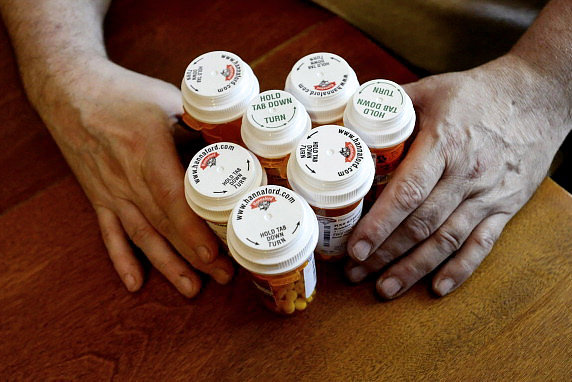Doctors welcomed federal approval this week of a new, fast-acting nasal spray for depression. But also they expressed concerns about its cost and long-term effects, as well as the logistics of administering it in accordance with safety requirements.
The new drug, esketamine, made by Janssen Pharmaceuticals, won approval from the Food and Drug Administration on Tuesday for people who have received little or no relief from other antidepressants. The F.D.A.’s decision followed months of anticipation; esketamine, which will be marketed under the name Spravato, is the first prescription for depression derived from ketamine, an old and widely used anesthetic.
The recommended course of the newly approved drug is twice a week, for four weeks, with boosters as needed, in conjunction with one of the commonly used oral antidepressants. But both esketamine and ketamine have side effects, including out-of-body sensations and hallucinations, and have the potential for abuse. The F.D.A. issued strict safety requirements: Doses must be taken in a doctor’s office or clinic, with patients monitored for at least two hours, the experience must be entered in a registry, and patients should not drive on the day of treatment.
“These issues raise barriers,” said Dr. Erick Turner, a psychiatrist at Oregon Health & Science University. “People have to come in twice a week to the hospital and stick around for two hours being monitored. So you’ve got to have space for them, and the question is, where? The waiting room’s not going to work — in the clinic somewhere, which can be hard to find. And then someone’s got to drive them home.”
[Like the Science Times page on Facebook. | Sign up for the Science Times newsletter.]
The cost of Spravato is also a concern, some doctors said. The wholesale price of the one-month initial treatment will range from $4,720 to $6,785, depending on dosage, according to Janssen. Follow-up treatment will cost an additional $2,360 to $3,540. That makes the overall cost comparable to existing treatments like electroconvulsive therapy and transcranial magnetic stimulation.
The retail price of esketamine, with added hospital costs, is steeper than treatment with intravenous ketamine, the generic anesthetic. Hundreds of clinics around the country already provide a course of intravenous treatments, usually six over a couple of weeks, for about $500 per infusion, plus booster infusions as needed. The cost comes out of pocket, since the generic anesthetic is not approved for depression.
Insurers are more likely to cover at least a portion of the cost of esketamine nasal spray, but the industry does not always follow the government’s lead.
“It’s expensive, and I’m skeptical, but we do intend to set up treatment here,” said Dr. Mark George, a professor of psychiatry and neurology at the Medical University of South Carolina, in Charleston. He said his electroconvulsive therapy clinic has space for esketamine treatment, but that he will have to hire a nurse and perhaps other personnel.
“I have spent 30 years investigating depression and I am massively aware of how devastating depression can be,” he added. “So for now I am grateful to have a new tool in the tool kit.”
Dr. Carolyn Rodriguez, an assistant professor and associate chair in the psychiatry and behavioral sciences at Stanford’s medical school, said the safety requirements were crucial, and that patients should also be informed of the drug’s risks.
“Ketamine’s effects are transient, and we don’t know the long-term effects of repeated dosing” of either the anesthetic or esketamine, said Dr. Rodriguez, who is studying the generic anesthetic as a possible treatment for obsessive-compulsive disorder. “We do know that people who abuse the drug, using it at higher doses, and frequently, have bladder toxicity and cognitive problems. Patients will need to be fully informed.”
Psychiatrists also said they have been thinking about which patients are ideal candidates for the new drug. The data presented by Janssen to the F.D.A. were mixed, and suggested that esketamine provided lasting relief for a subset of people with treatment-resistant depression.
Doctors administering the intravenous generic anesthetic also have reported mixed results, with some reporting very high improvement across the board, and others much less so.
Dr. John Lauriello, chair of psychiatry at the University of Missouri School of Medicine, in Columbia, said that his clinic already administers intravenous ketamine for some patients, with good results. The new drug, he said, likely would appeal most to people with deep depression who are skittish about being hooked up to an I.V. and respond slowly to other treatment.
“I’ve got a guy, he eventually got better on standard antidepressants,” Dr. Lauriello said. “But it took three weeks; they were the worst three weeks of his life, and mine. That’s the sort of person I might give the esketamine spray, to buy time until the standard treatment works.”
Dr. George, the South Carolina psychiatrist, said that patient selection may be crucial to getting the most out of the newly approved medication. “If it turns out the new drug helps even one of 10 people with this disease, and we can figure out who those people are, then it’s very much worth it.”





